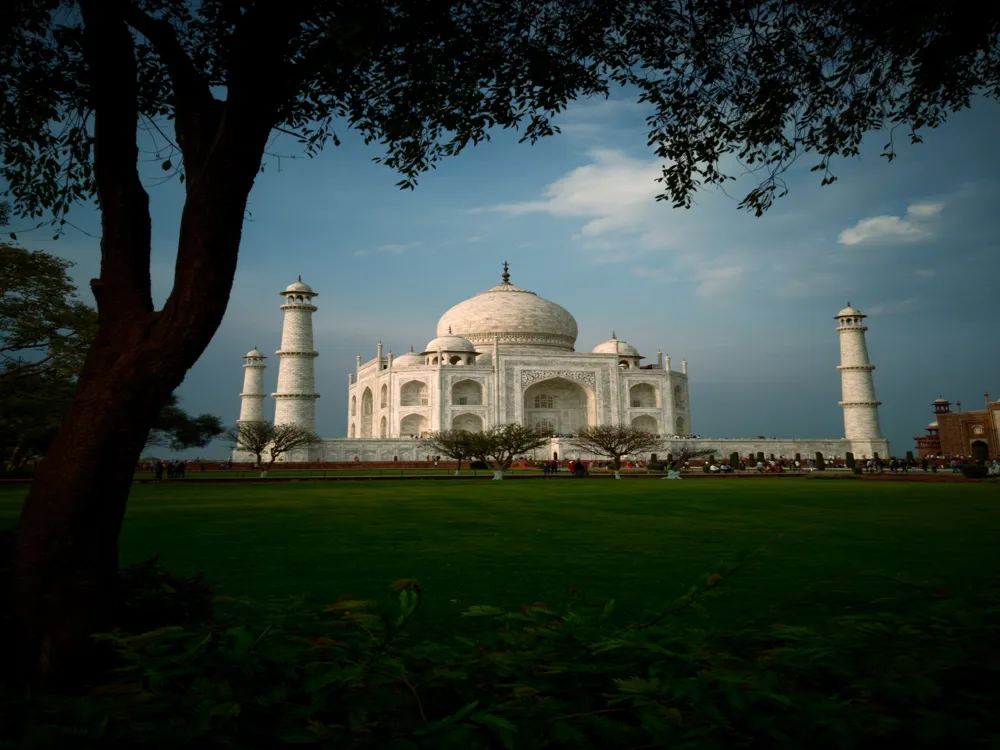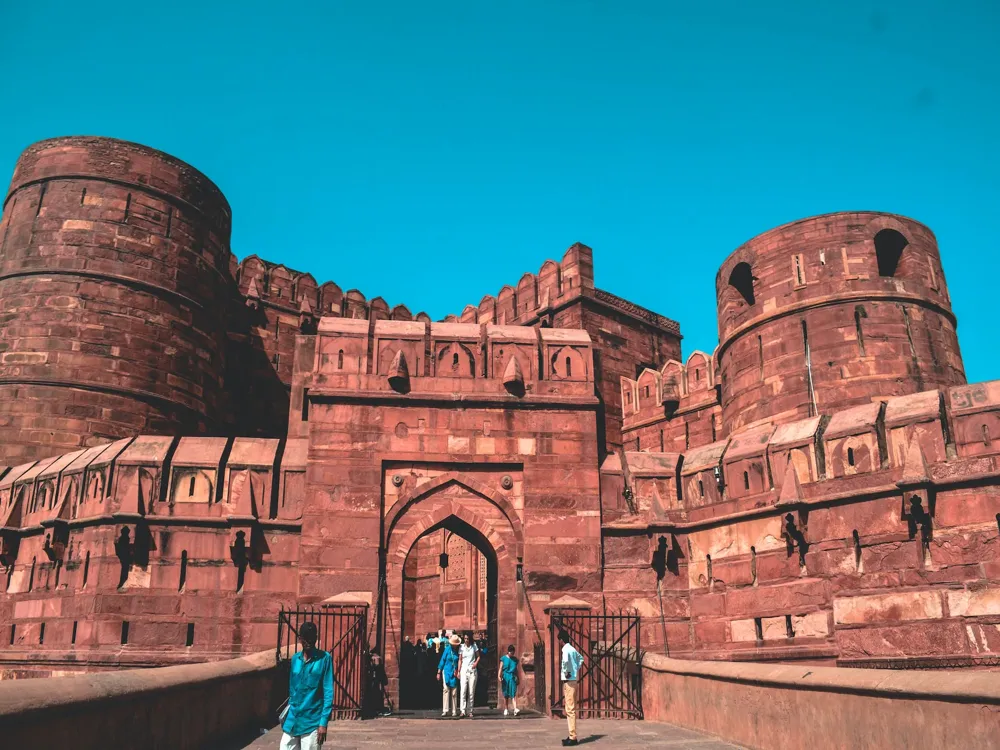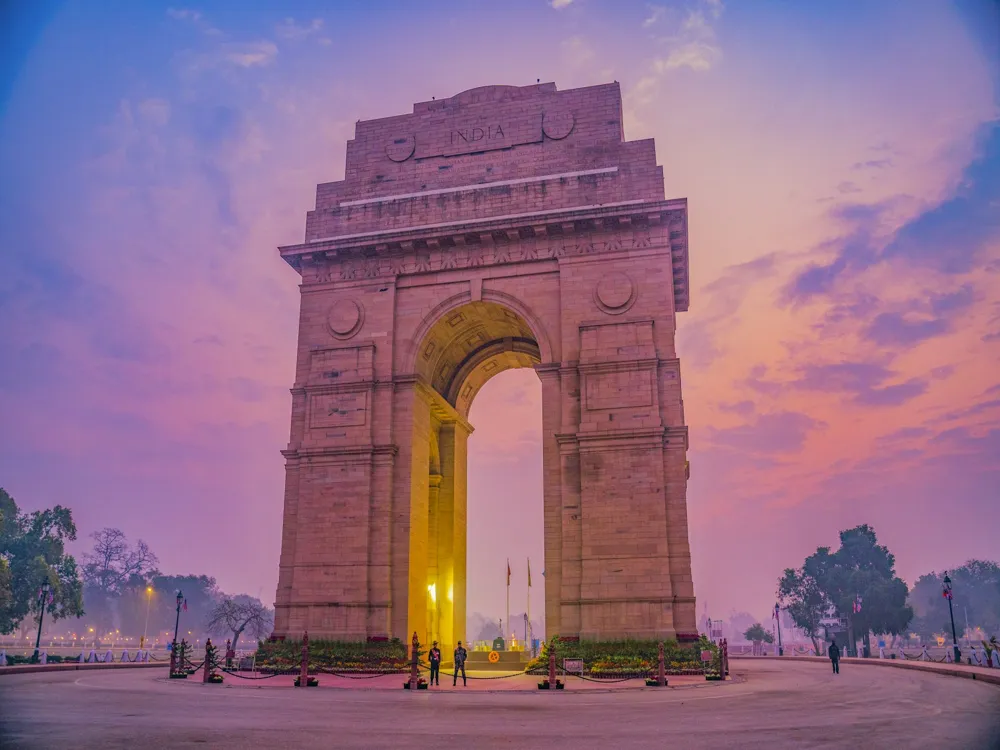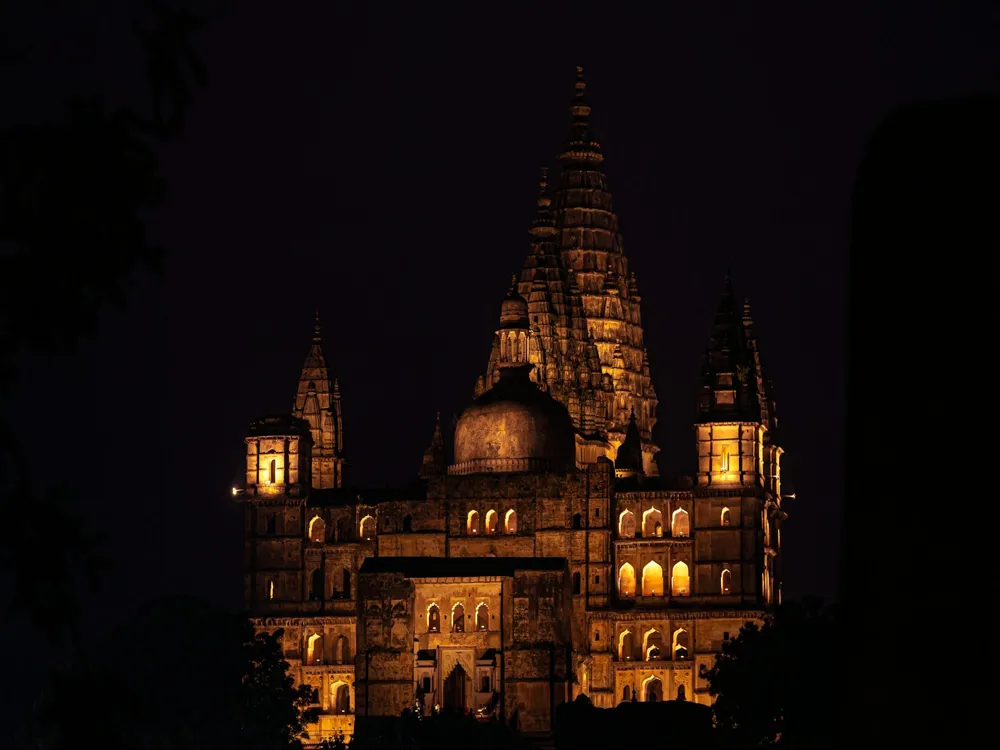Plan Your Travel To Agra
Places To Visit In Agra
Agra Fort
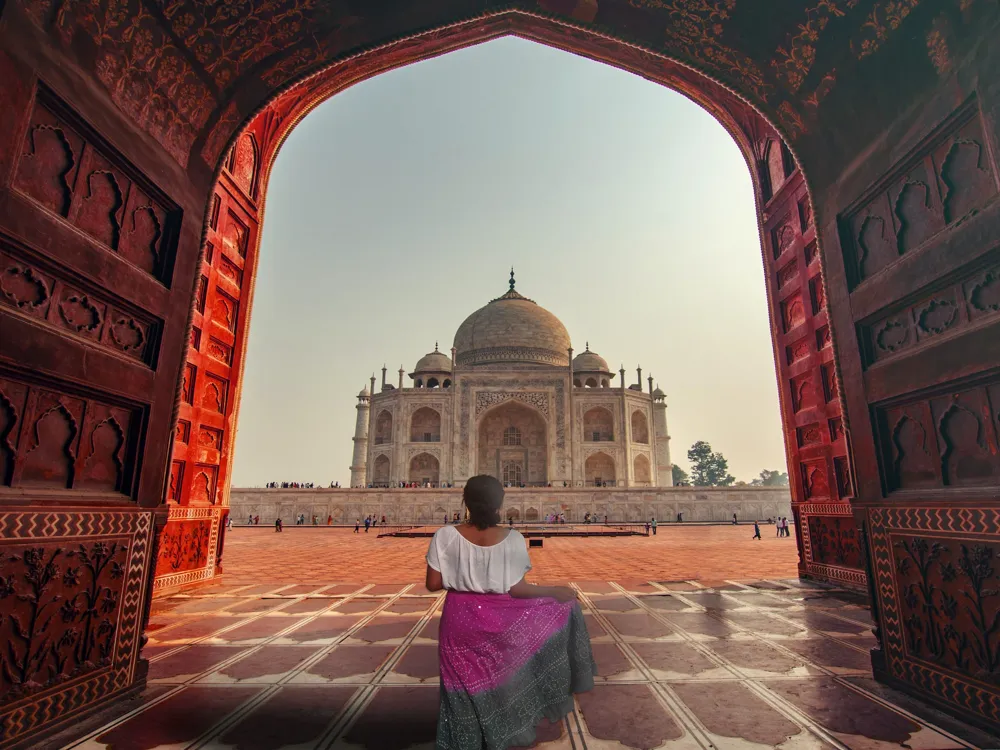
An architectural masterpiece, The Red Fort of Agra or Agra Fort was built by Emperor Akbar in 1573. It is located on the right bank of the River Yamuna and is made entirely of red sandstone. The historical fort was once the ersthwhile residence of the Mughals until 1638. One of the UNESCO World Heritage Sites, it lies 2.5 kilometres from Taj Mahal.
Also known as Lal –Qila, Fort Rouge or Qila-i-Akbari, Agra Fort is a symbol of Agra and is so massive that it is often referred to as a walled city. It is the perfect example of Mughal art and architecture, built purely out of red sandstone. Within the premises of Agra Fort lie the most exquisite structures like the Pearl Mosque, Diwan-i I Khas, Diwan-i I Aam, Moti Masjid and Jahangiri Mahal. Some part of the Agra Fort is used by the Indian Army is off-limit to public access. View of Yamuna River and Taj Mahal from the fort's pavilions is mind-stirring.
Read More
Akbar's Tomb
The final resting place of Mughal Emperor Akbar, Akbar's Tomb is situated in Sikandra, the outskirts of Agra and spreads over an area of 119 acres. An important architectural masterpiece of the Mughal era, it was built between 1605 and 1618. Built entirely out of sandstone and white marble, Emperor Akbar himself oversaw the construction of this tomb until his death. Unlike the other tombs of famous Muslim kings around the world, the Tomb of Akbar faces towards the rising sun instead of Masjid of Mecca.
The main tomb is surrounded by a beautiful garden that was designed by Akbar himself. His wife's (Mariam-uz-Zamani Begam) tomb is also located in Sikandra about a kilometre away from Akbar's Tomb. Following Tartary traditions, that state that one must see-through the construction of one's tomb themselves, Akbar lived through the construction of his tomb and built a beautiful garden around it.
Read More
Anguri Bagh
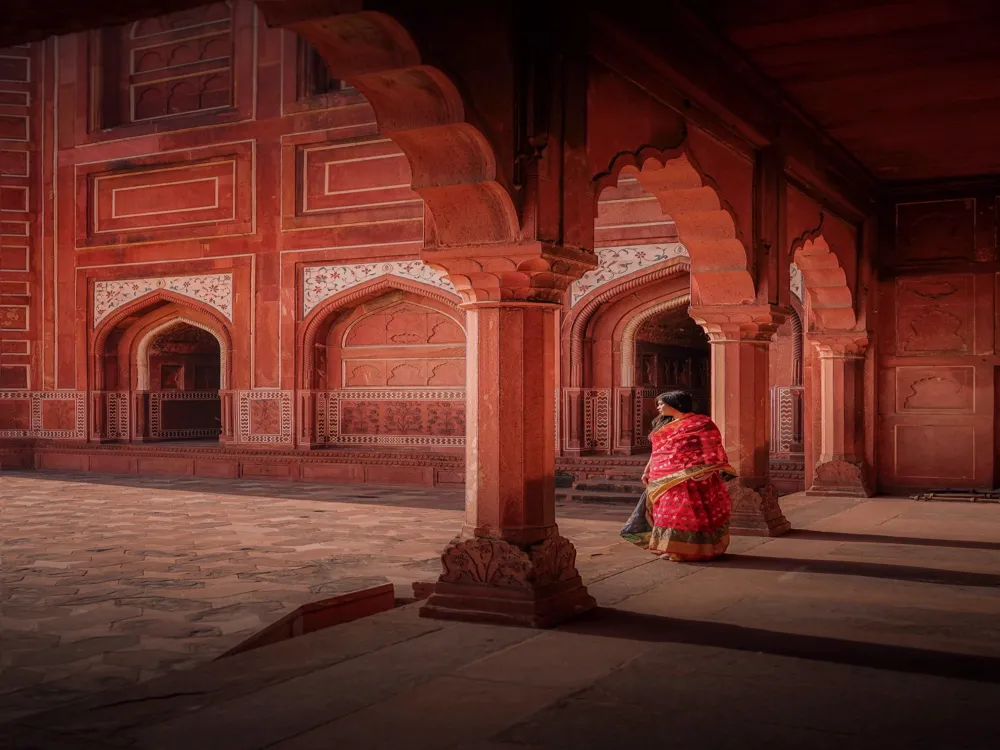
Anguri Bagh is a sprawling charbagh (four complex compartments) styled garden, centrally situated in the premises of Khas Mahal in Agra Fort. It was built by Mughal Emperor Shah Jahan in 1637 as his exalted place of leisure and rest. If touring Agra Fort, this is a must-visit spot for an insightful exploration of the Mughal history.
Originally popular for thick creepers of grapes- their cultivation and harvesting, the garden accurately came to be called as the Garden of Grapes (Anguri Bagh). The surrounding structure is composed of fine white marble which was initially painted and gilded in gold and was adorned with exquisite beautiful paintings. The main part consists of a hall with recess and rooms in a surrounding semicircular pattern and a huge courtyard in the front with tanks, fountains and hammams overlooking a spectacular garden which is- Anguri Bagh.
Read More
Chini ka Rauza
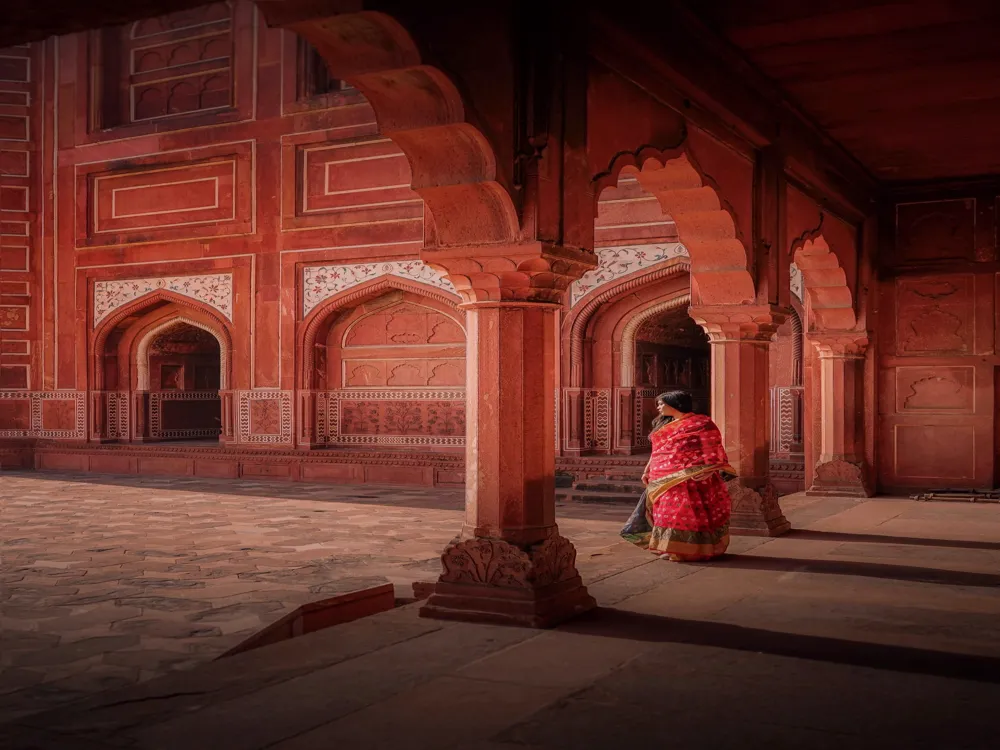
Chini ka Rauza is the tomb of Allama Afzal Khan Mullah, the Prime Minister of the Mughal Emperor Shah Jahan. Also known as China Tomb, it was built between 1628 and 1639 and has a marvellous fusion of the Indo-Persian style. It is the first monument of its kind to be decorated by glazed tile work, known as chini.
Chini ka Rauza is located 1 km north of Itimad-ud-daulah's Tomb, on the banks of River Yamuna. The tomb is built facing Mecca Masjid. The tiles for the mausoleum are known to have been imported from China which makes the monument even more striking with their colour embellishments and artwork. Although the enamels and inlay work is wearing off due to climatic conditions and absence of renovation, the Chini ka Rauza is a fantastic example of long-gone style and architecture.
Read More
Dolphin Water Park
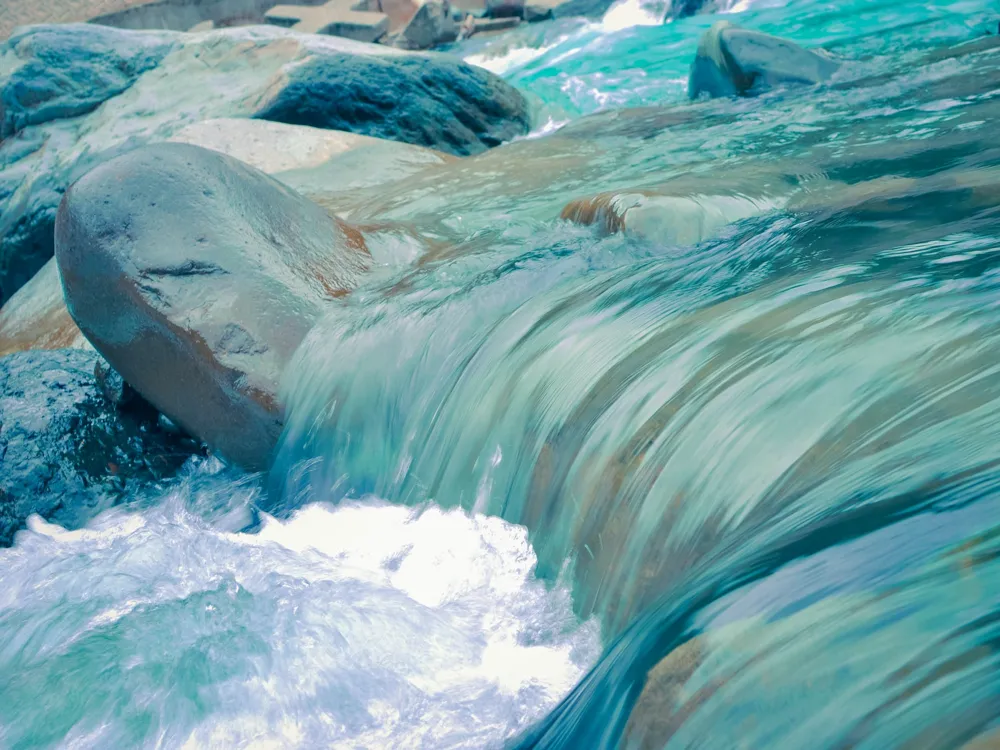
Inaugurated in 2002, Dolphin World Water Park is spread over an area of 14 acres and is replete with thrilling slides, roller coasters, water and regular rides etc. Besides, it has an amusement park, a play area for kids, a locker room and other facilities.
Dolphin Water World has been a popular source of recreation and entertainment for the city dwellers and tourists ever since. The water cum theme park offers a variety of rides and fun games both for adults and kids, They also have height based separate swimming pools.
Read More
Fatehpur Sikri
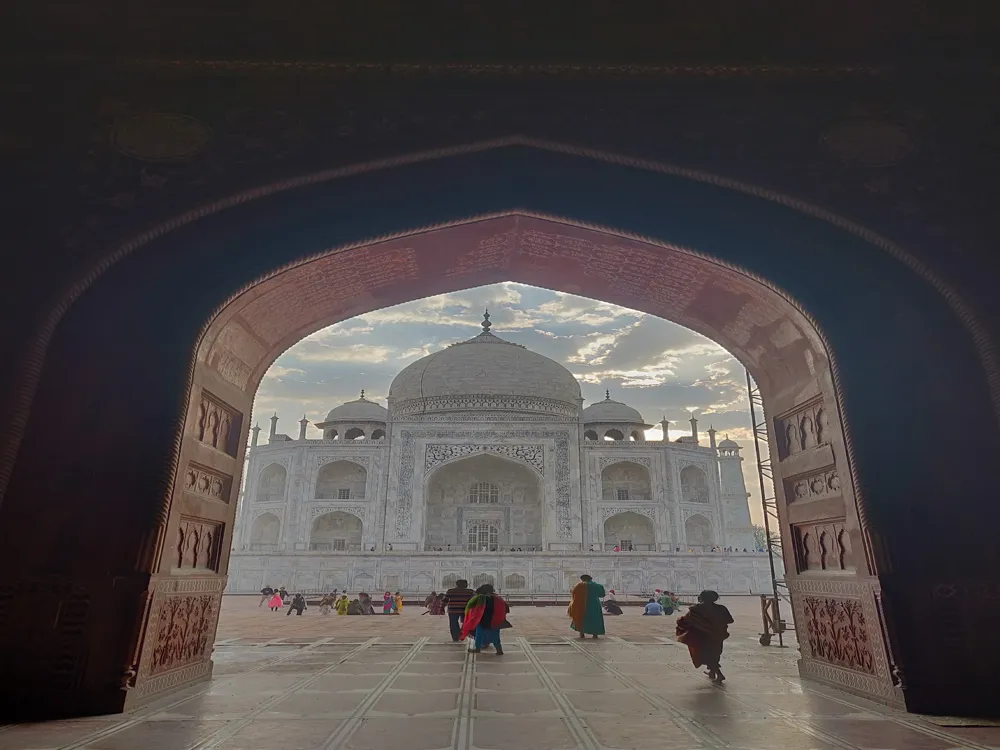
Located at a distance of 40km from Agra, Fatehpur Sikri is a town in the Agra district and a famous tourist attraction. A city predominantly made of red sandstone, Fatehpur Sikri was founded in 1571 century by Mughal Emperor Akbar. It is essentially a fortified city built by the king and had been the capital of his Empire for fifteen years. Now a UNESCO world heritage site, it is home to Jodha Bai's Palace, Jama Mosque, Buland Darwaza, and Tomb of Salim Chisti among many other famous monuments. Derived from Arab and central Asian tent encampments, the Imperial Complex is a work of pavilions arranged in formal geometry on a piece of land.
A unique blend of architectural excellence, as well as religious beliefs - sums up Fatehpur Sikri. It was built by Akbar to honour Sheikh Salim Chisti, whose prediction of the birth of a Mughal heir came true while Akbar was visiting the then city of Sikri. In honour of the prophecy, Akbar built this city and Jama Masjid, a stunning mosque which is still in use today. He also undertook the construction of three palaces for each of his favourite wives, one a Hindu, one a Muslim and one a Christian. An Indo-Islamic Masterpiece, Fatehpur Sikri look its resplendent best during sunset.
Read More
Friends Gokulam Fun City Water Park
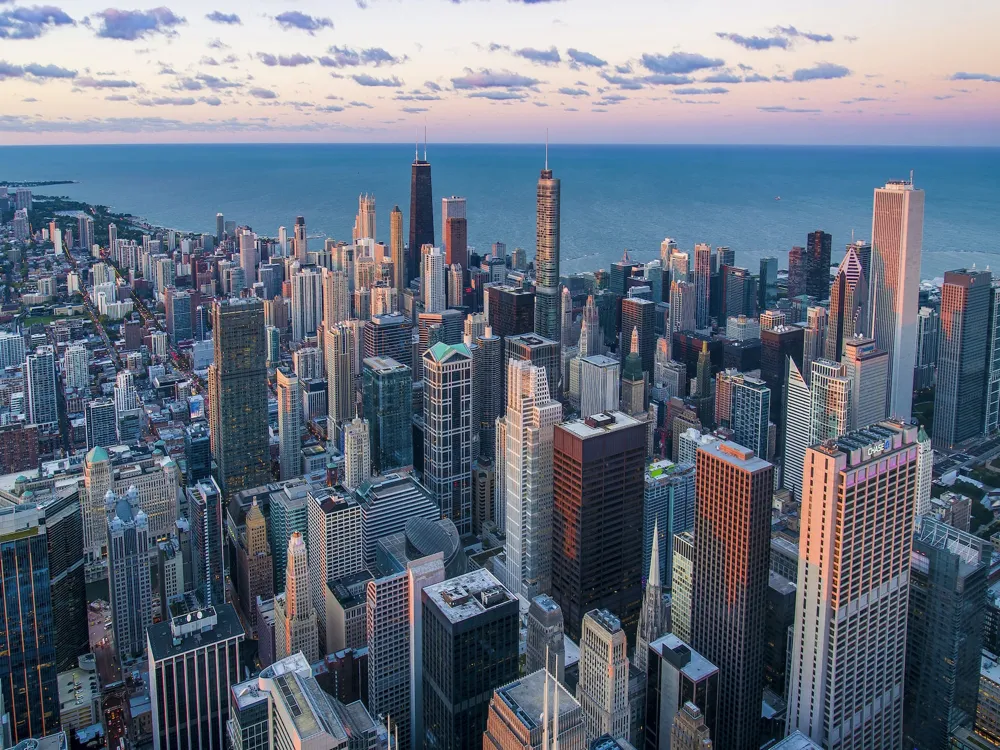
Friends Gokulam Fun City Water Park is the second largest water park in Agra. Spread over vast acres of land, the water park boasts of a number of slides, roller coasters and fun rides both for adults and kids.
Itimad-ud-daulah's Tomb
Often referred to as the "Baby Taj Mahal", the tomb of Itimad-ud-daulah is a Mughal mausoleum and often regarded as a copy of the Taj Mahal. This is the first tomb in India made entirely of marble. The tomb was commissioned by Nur Jahan, the wife of Jahangir, for her father Mir Gheyas Beg (later known as Itimad-ud-daulah), who was a minister in the court of Shah Jahan.
The tomb of Itimad-ud-daulah marks the transition from the first phase of the Mughal architecture to the second. This was the first structure to make use of pietra dura and the first to be built on the banks of the Yamuna River. It basically consists of Indo-Islamic architecture, with the use of arched entrances and octagonal shaped towers. If you take a bird's eye of Itimad-ud-daulah Tomb, it looks like a jewel box set in a garden. This magnificent mausoleum, built on the banks of Yamuna, was to inspire the construction of one of the wonders of the world "Taj Mahal" in the later years.
Read More
Jama Masjid

Jama Masjid at Agra also known as 'Friday Mosque' is a seventeenth-century structure and is one of the largest mosques built by the Mughals in India. Constructed under the reign of Shah Jahan in 1648, Jama Masjid is dedicated to his favourite daughter Jahan Ara Begum. This splendid monument is visible from the Agra Fort with the Agra Fort Railway station right between the two structures.
The Jama Masjid is built mainly of red sandstone and white marble that stand as a testimony to the magnificent Mughal architecture. It has a fountain at the centre and is supported by four kiosks in the courtyard. The interior walls have scriptures in the Persian style praising for Shah Jahan and Jahan Ara. The inlaid panels of work here are quite similar to that of Taj Mahal and are common to all the monuments and structures built by the Mughals in Agra. Every Friday, special prayers are conducted at this mosque which is attended by thousands of devotees. The Tomb of Salim Chisti is a part of the mosque compound.
Read More
Mehtab Bagh
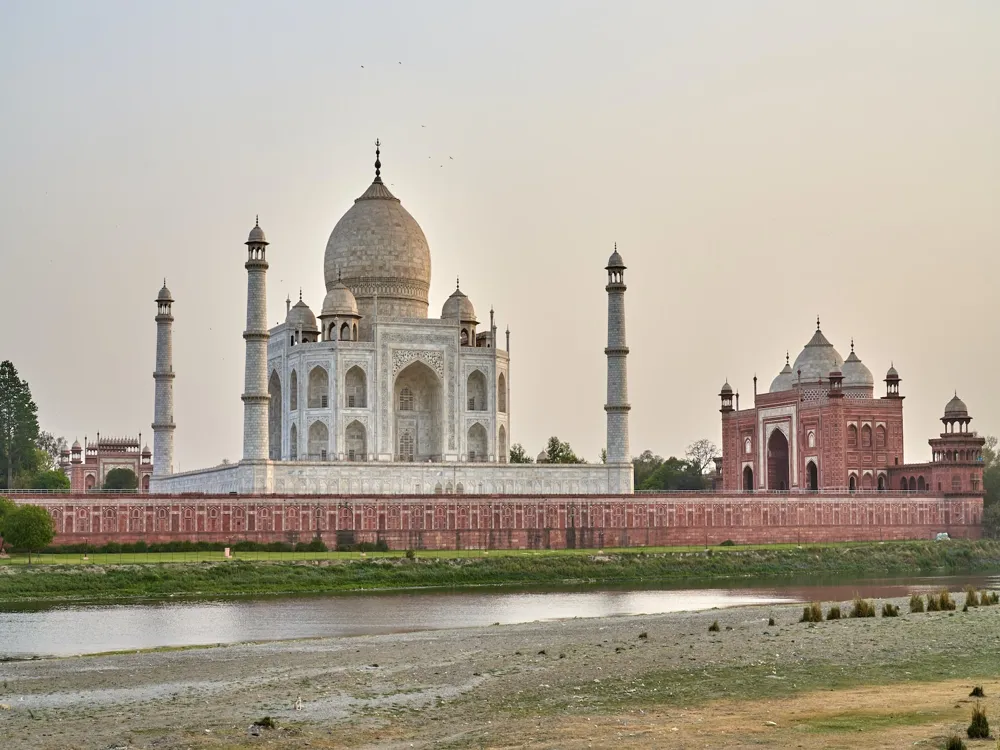
Mehtab Bagh is a charbagh garden complex and one of the last Mughal gardens in Agra. It is located just north to the Taj Mahal and overlooks the Agra Fort and Yamuna river on the opposite side. Perfectly aligned with the gardens of Taj Mahal, Mehtab Bagh provides a picture-perfect view of the Taj from the fountain at the front of the entrance gate. It is a popular sunset spot among the photography fanatics and nature enthusiasts.
The splendid Mehtab Bagh has four sandstone towers, one each at the corner with a huge octagonal tank right in the centre. It is believed that Shah Jahan especially got the bagh designed for his personal interests so he could come up here and admire the infinite beauty of Taj Mahal. On the moonlit nights, the clear reflection of the wondrous Taj Mahal in the waters of the park is a sight beyond description. Mehtabh Bagh is now a horticulture delight with scores of vibrantly blooming floral plants and medicinal herbs, besides the umpteen fruit trees, which add to the beauty of the park.
Read More
Agra Travel Packages
View All Travel Packages Agra
Nearby Places Agra
Browse Package Collections
Browse Hotel Collections










